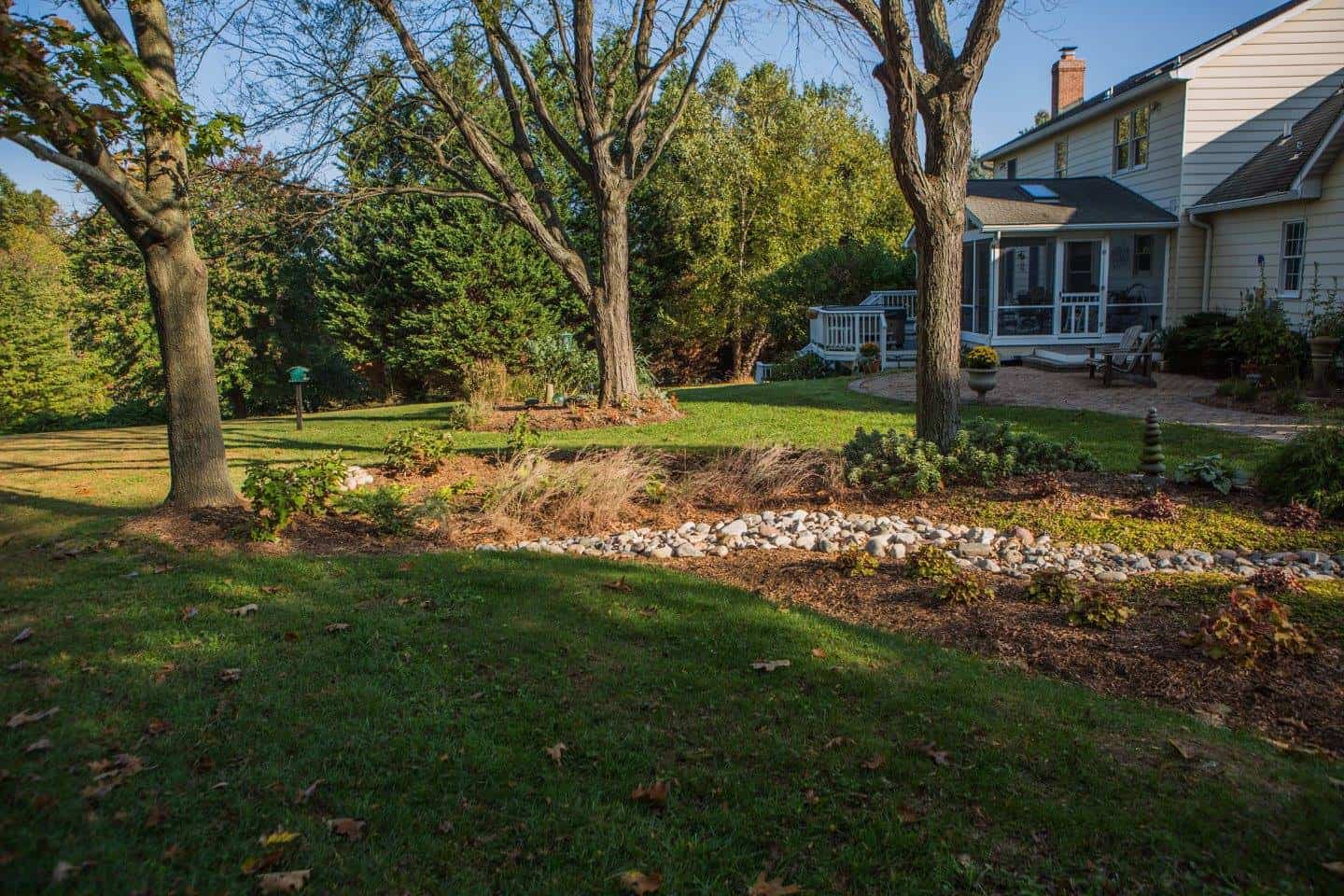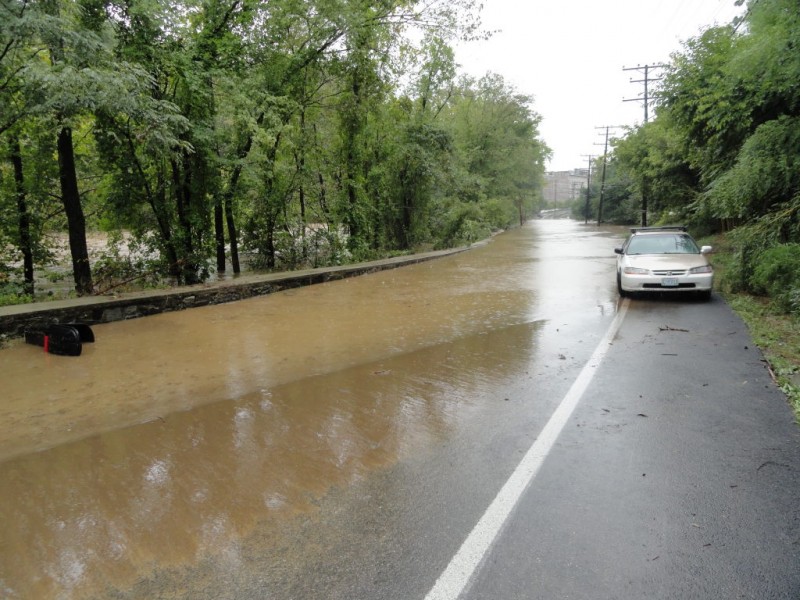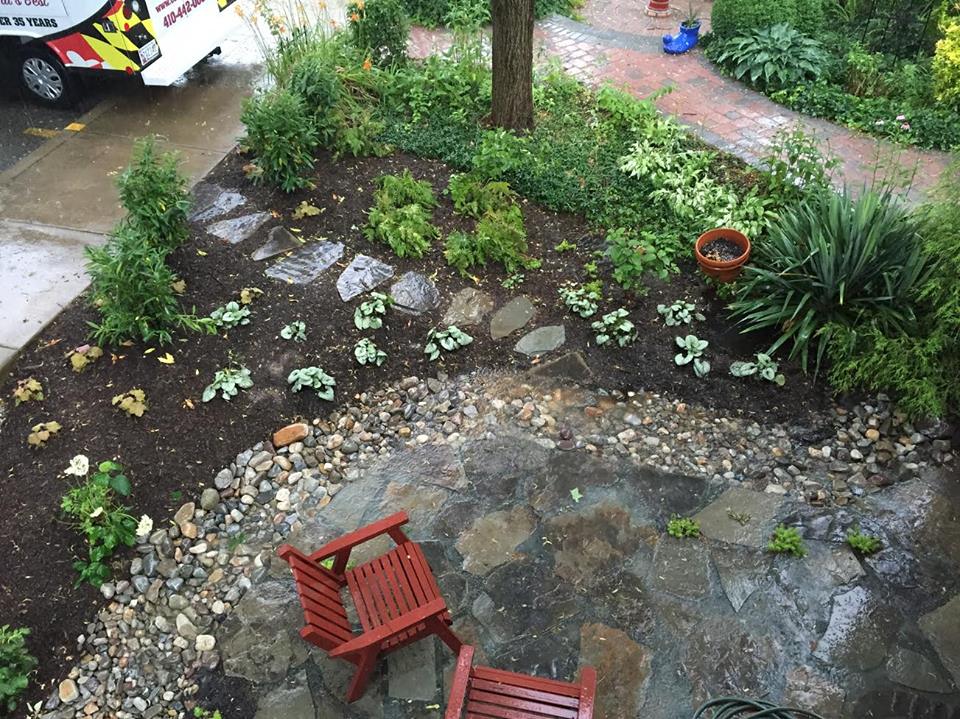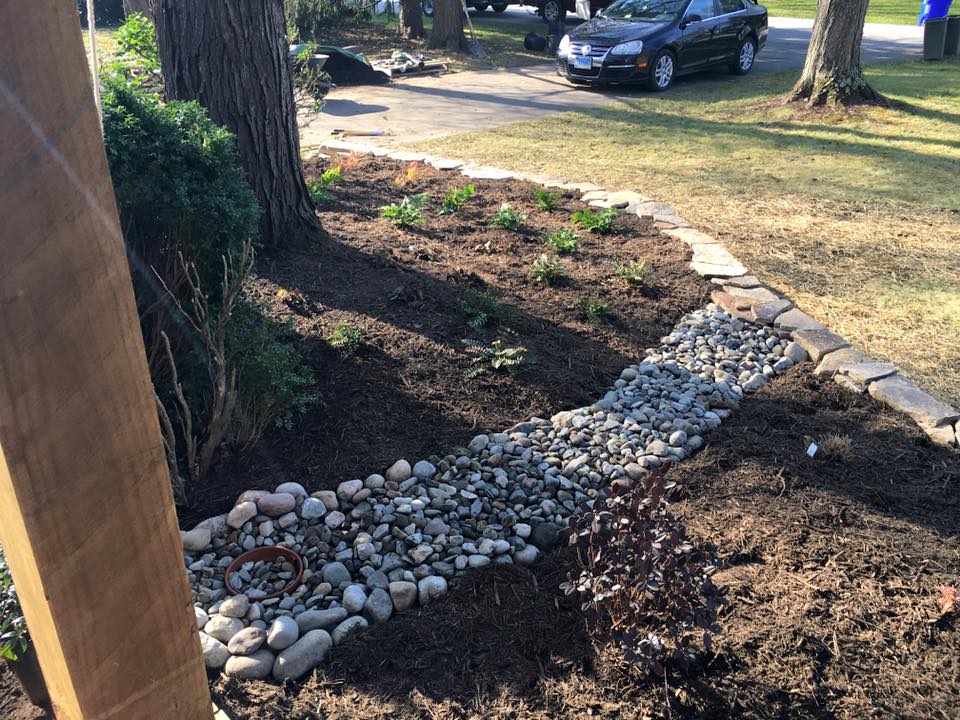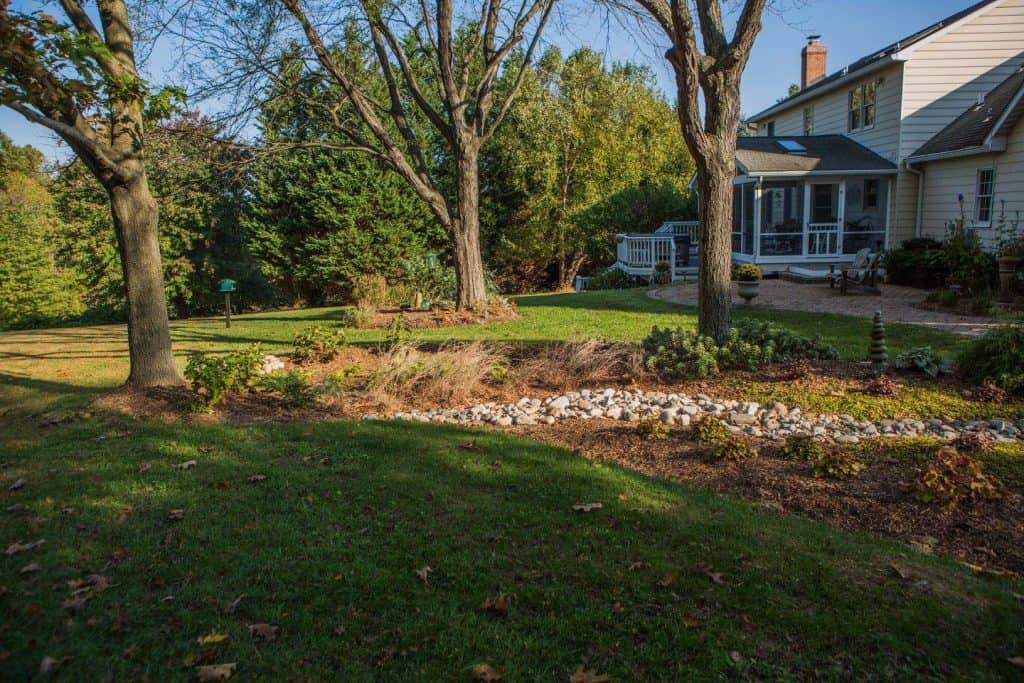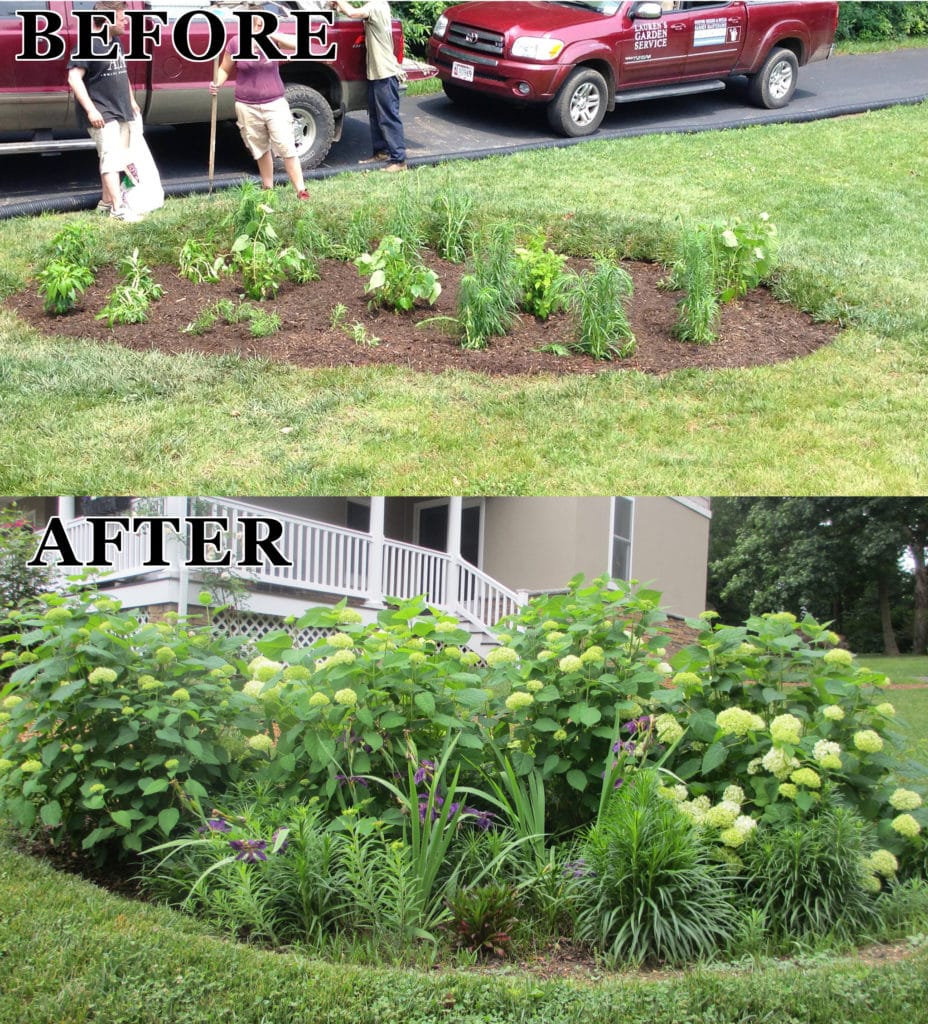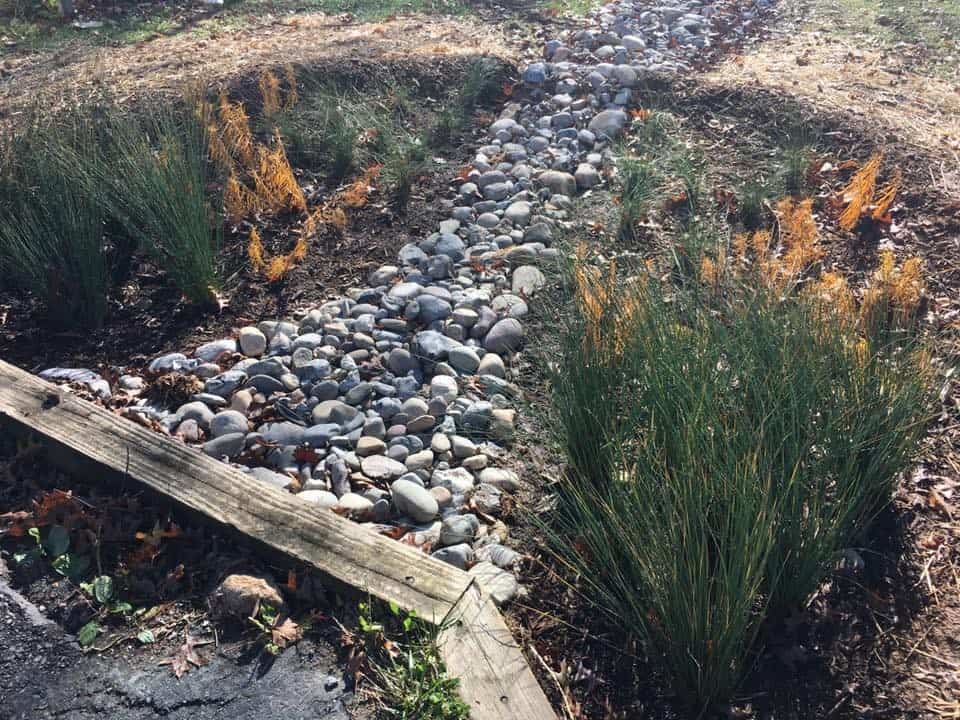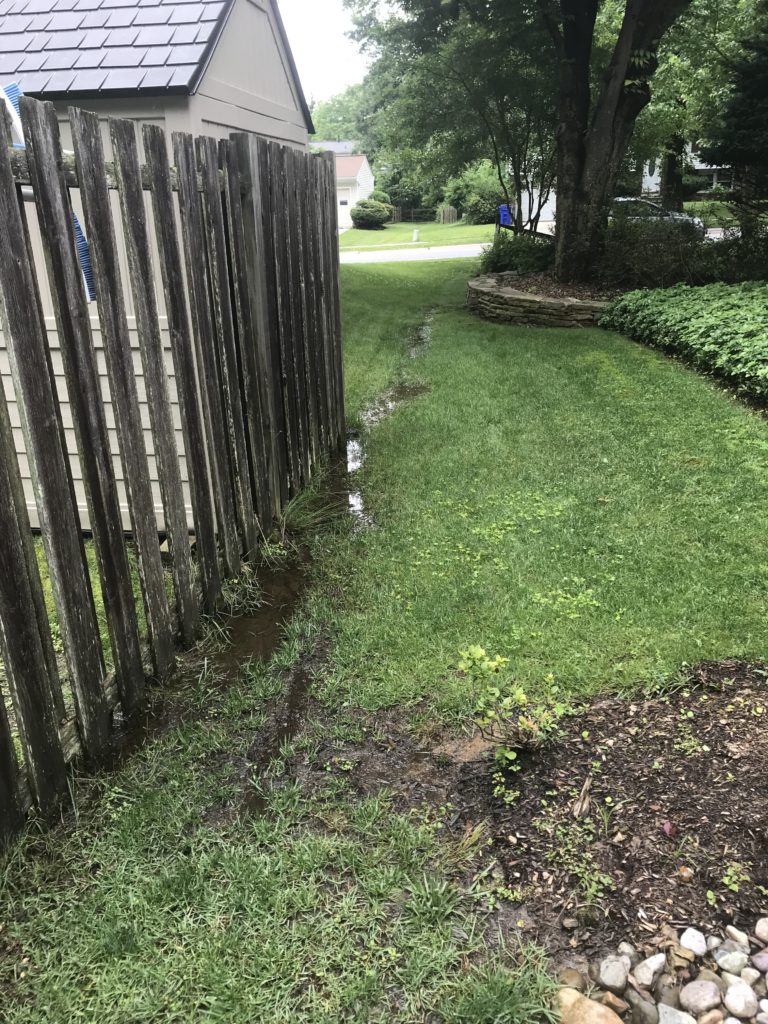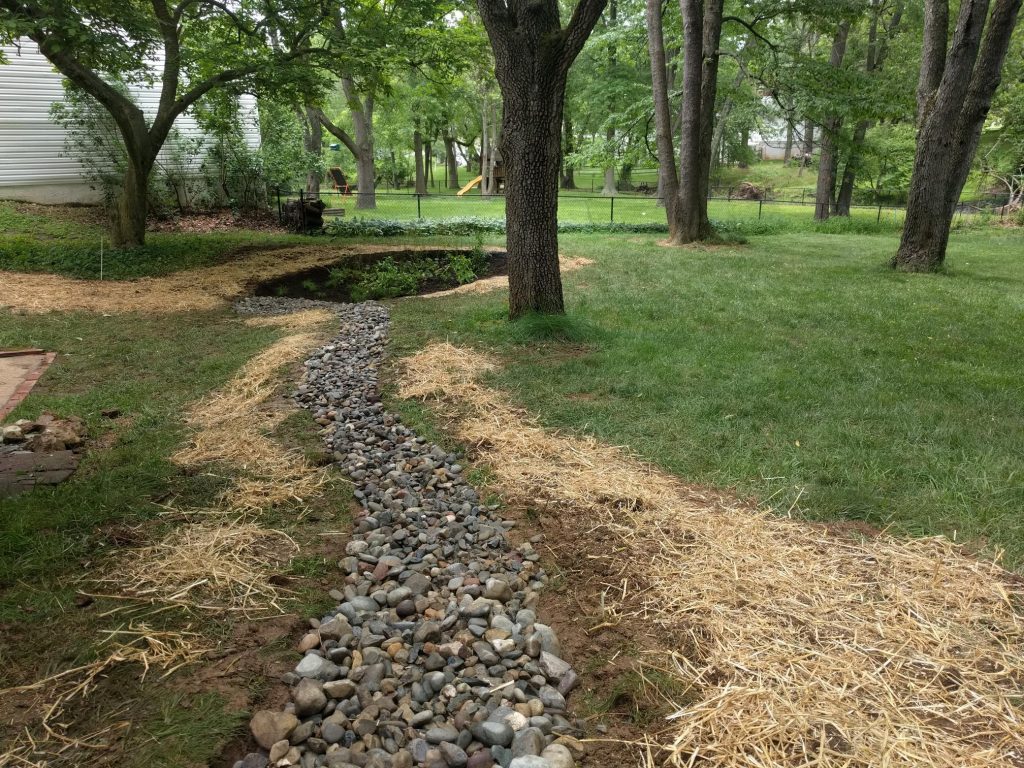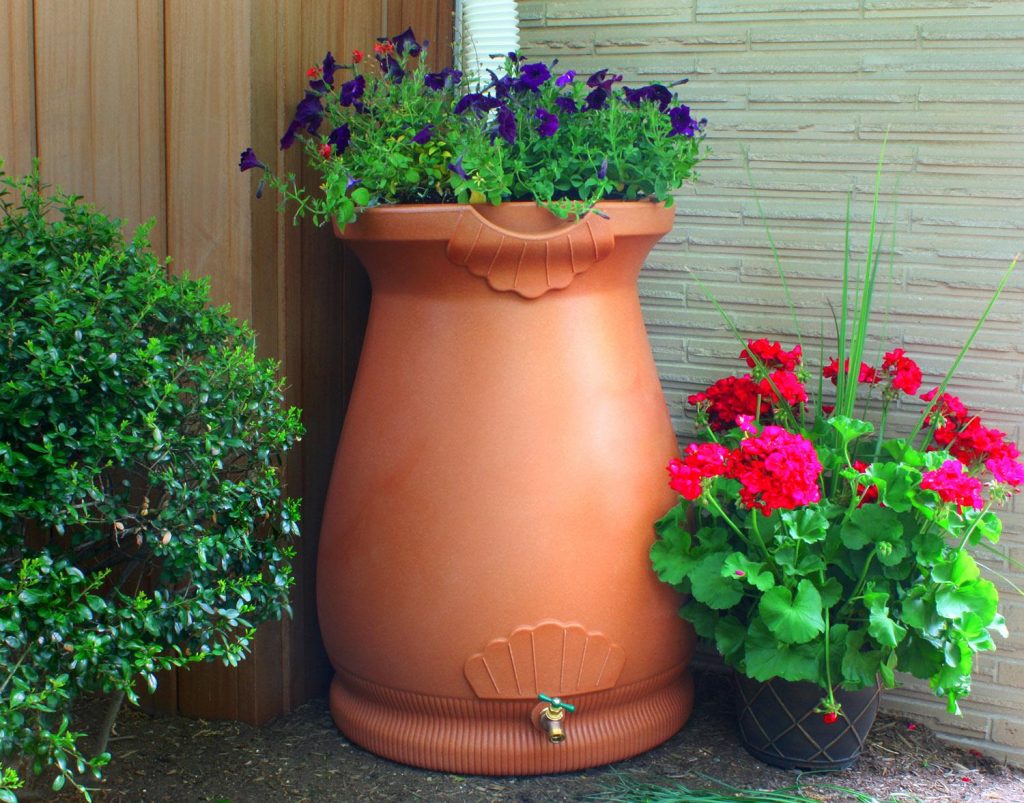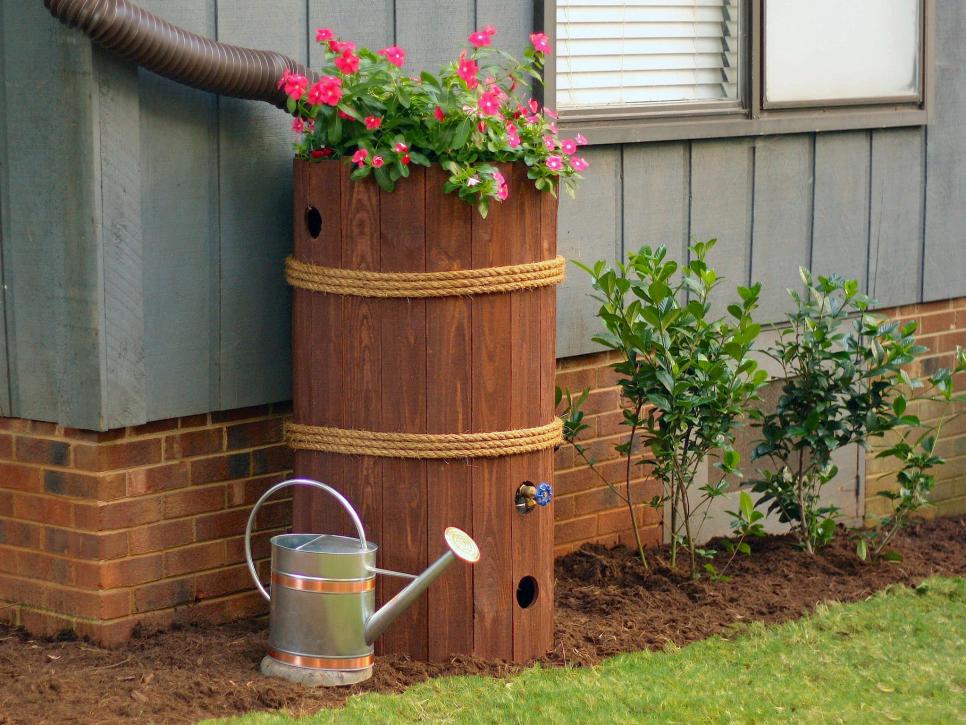All About Stormwater Management
Why is it Bad?
If you’ve been hearing a lot about water quality and improving watersheds lately, it is not surprising. Howard County is making a strong push to protect and improve water quality in local streams and rivers, and rightfully so. Areas like Old Ellicott City and Oella frequently endure damage from an abundance of stormwater. In recent years, large storms have been a huge concern for residents and businesses.
Stormwater also acts as a transporter of nasty pollutants in and on the ground. Some of the major sources of pollutants in area streams are nutrients, sediment and toxins like oil, grease and trash from roads, chemicals applied to lawns, gardens and crops, roofs, driveways, patios, roads and sidewalks (known as impervious surface). The County is pursuing an integrated watershed improvement approach, which means it’s relying on the active involvement of the community, including nonprofits, citizen groups, businesses, and residents to develop strategies to improve the water.
At LGS, we run into quite a few yards with drainage problems. The most common problems we run into are muddy spots in the lawn, water coming into the basement, sheet flow of water through the yard in a storm, perpetually soggy areas or standing water, erosion where a high velocity of water comes off of the roof or other impervious surfaces creating runoff that erodes yard areas and creates wash outs.
What’s Being Done?
The Howard County Watershed Improvement Network (WIN) is a coalition of County watershed group leaders working to protect, improve, and promote the health of watersheds within the County. They help implement positive initiatives locally to improve the County’s waterways. The Howard County Watershed Stewards will send a volunteer out to access your property and make suggestions on how you can help drainage issues on your property.
Part of that effort involves controlling and treating stormwater runoff from impervious surfaces. Rain on parking lots and sidewalks runs off quickly into storm drains instead of soaking into the ground. Treatment projects involve upgrading stormwater collection ponds and drains, planting trees to help prevent erosion, or installing green infrastructures such as rain gardens and dry wells. All of these practices aim at slowing the flow of water off of properties and promote soaking of water on site.
Howard County’s goal is to treat some 2,000 acres of impervious surface over the next few years. While the County has been actively working on projects on public lands, the bigger challenge is getting commercial property owners and residents to implement stormwater controls through best management practices (BMPs). BMPs are rain gardens, dry river beds, dry wells, and conservation landscapes (gardens with all native plants), which are practices that have been approved by the County to help them meet their water quality goals.
What can you do?
Residents can slow the flow of runoff during storms by running gutters and driveway run off into a rain garden, conservation landscaping or dry riverbed. As an incentive, Howard County has a program called Cleanscapes that will reimburse residents for a portion of the installation costs of rain gardens, conservation landscaping, rain barrels, and other projects if they meet certain requirements. Check out our Pinterest board for Stormwater Management inspiration!
Many of our clients have water on their property that does 4 things:
- Comes from their roof out of the gutter and washes away the grass causing soil erosion.
- Comes from neighboring properties and washes through their yard in a ‘river’ when it rains or pools in an area in their yard.
- A combination of 1 and 2 above.
- Yard becomes soggy on a regular basis, likely due to high water table.
Sometimes you need multiple solutions to truly solve the drainage issues. Keep this in mind when thinking about your long term goals!
Stormwater BMPs
Best Management Practices (BMPs), help correct some of the issues caused by these drainage and erosion problems. Their goal is to keep as much water on site as possible, allowing the water to infiltrate and recharge the groundwater. Newer construction law requires builders to run the water that hits these surfaces to a bioretension area (a large rain garden) or other practice which helps filter pollutants and sediment. Construction sites are required to put up little borders that keep the soil on the construction site when it rains. This protects all that soil from washing into local streams and silting them up.
4 great BMPS you can install in your own yard are:
- Rain Gardens
- Conservation landscapes
- Dry riverbeds
- Rain barrels
Rain Gardens
This is the most supported practice in the Cleanscapes program. Residents can get a 50% reimbursement for the installation of a rain garden (up to $1200). For your typical larger than 1/4 acre lot a rain garden will cost around $2160. That includes the entire service from site assessment, locating the best area for the rain garden, custom designing the rain garden and installation of the rain garden which includes plants, river rock, well draining soil, mulch and anything else needed to install the rain garden.
Rain gardens are best when you want to collect large amounts of water from a downspout or driveway that typically pools on your lawn, and channel that water into a beneficial garden. They are incredibly beneficial on a larger scale, preventing local flooding, reducing pollutant that enter waterways, reducing use of water from hoses and sprinklers, and providing habitat and food for wildlife. Click here to see our rain garden portfolio.

Water pooling on a lawn
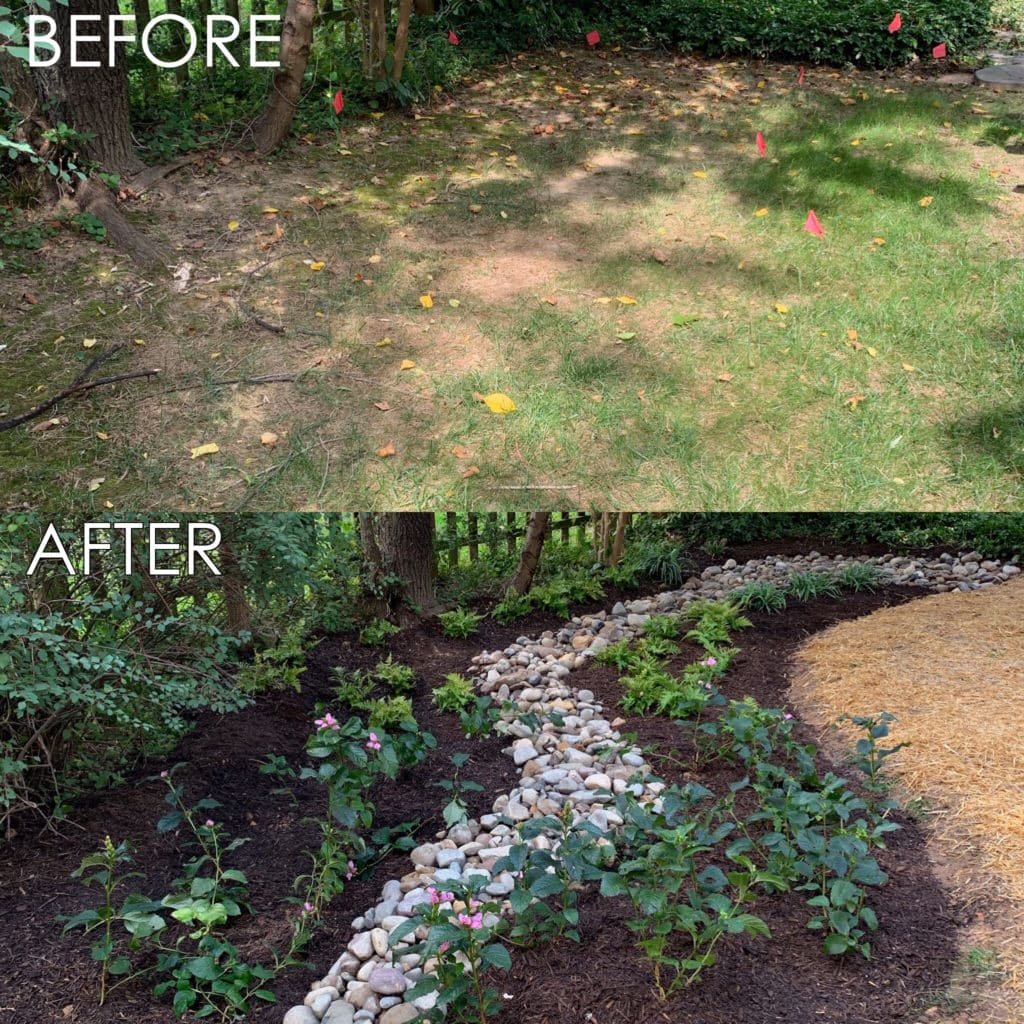
Deer and shade tolerant rain garden, installed where grass wouldn’t grow because of stormwater runoff
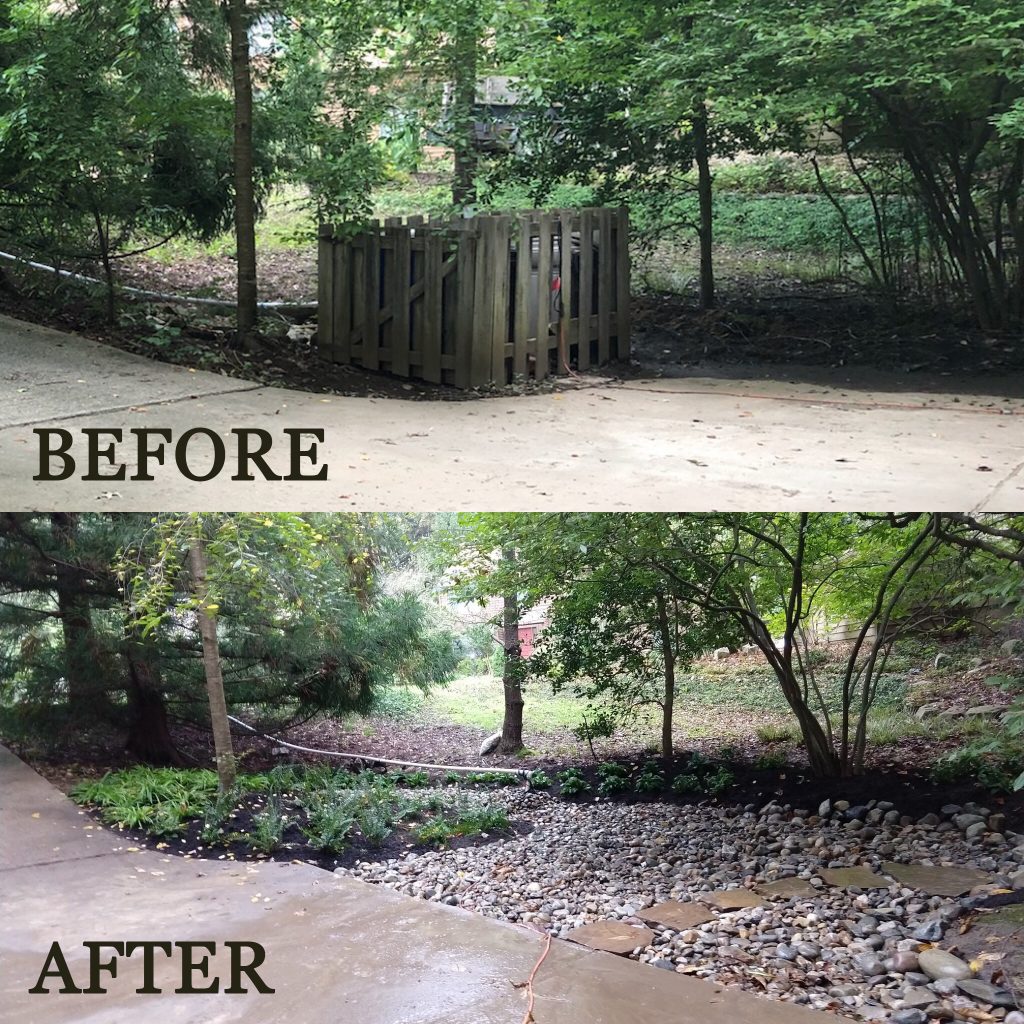
Dual rain gardens at the bottom of a driveway where water would flood over a foot deep. One rain garden is planted, the other is stone, and there is a sump pump in between for additional management
These rain gardens all helped to prevent large amounts of stormwater from impervious surfaces from pooling in lawns and creating swampy messes, while providing a beautiful, beneficial garden.
Conservation Landscapes
Conservation landscapes are great for situations where there’s runoff from a downspout or driveway, but not enough room for a full rain garden. They are simply gardens with 3 inches of ponding depth, which allows them to catch smaller amounts of rainwater. Just like rain gardens, conservation landscapes help reduce flooding, improve water quality, and provide habitat and food for wildlife.
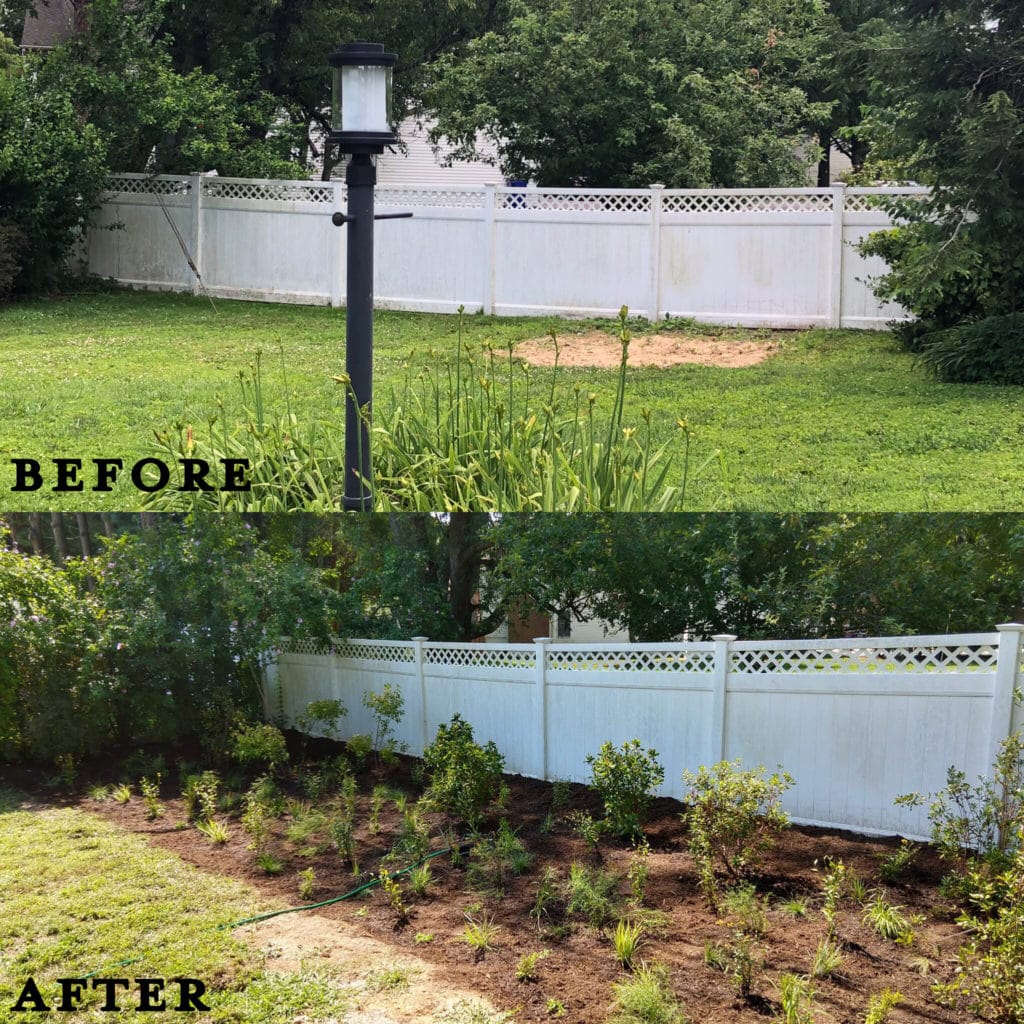
Here, rain water was pooling near the fence, so we installed this 520 square foot rain garden to collect standing water. Only native plants were used to create a natural, low maintenance environment that is ecologically beneficial.
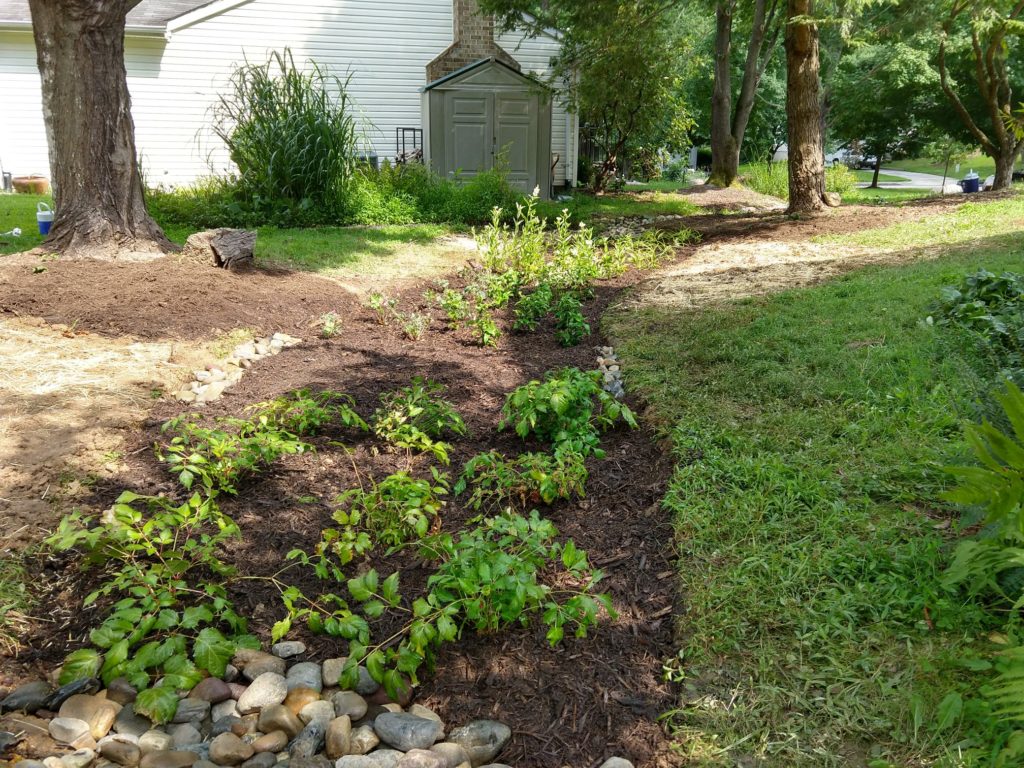
Conservation landscape connected to a rain garden in an area where rainwater would create a channel along the lawn
Dry riverbeds/Swales
Dry riverbeds are used to direct into, out of, or through a garden to prevent washout of mulch and dirt, and to prevent rainwater channels through lawns. They keep the area from getting swampy, and are often used in rain gardens and conservation landscapes as a second step to mitigate stormwater.
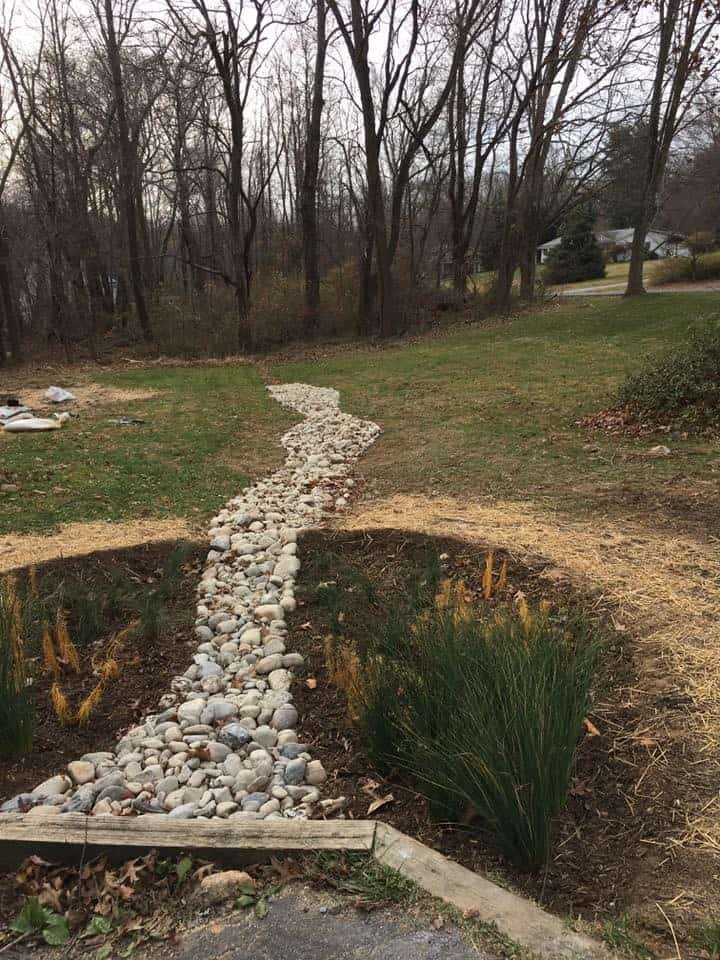
Stormwater Treatment Train- A Rain Garden, Dry River Bed and French Drain (under ground) to Reduce Soggy Lawn
Rain Barrels
Rain barrels are a great way to save water collected from your roof, reducing the volume of water that runs off your property. The best application of a rain barrel is when it is located near a garden or containers that it can be used for when water is needed. We’ve also set up rain barrels to empty into soaker hoses that slowly release water into your garden beds. The County often gives rain barrels away at special events. We can give you a free estimate for rain barrel installation if you think its right for your property. We’ll help you access the best location and likely uses and help you troubleshoot any concerns.
How To Prepare For a Stormwater Estimate:
1.Take pictures or videos of the property during storms
2. Determine where the water is coming from- downspouts, the neighbor’s property, driveway…
3. Decide on a budget.
At Lauren’s, we’ve been installing rain gardens, dry river beds, dry wells and conservation landscapes for years, using locally grown plants that are native to the region. The gardens not only control rain runoff, they also attract birds and bees, and serve as a beautiful additions to yards. If you are nature lover, bird lover, like to attract wildlife to your yard or just like to be a conscious citizen doing your best then consider calling us for a free estimate to control stormwater runoff in your yard.
Here is a link to the County’s Cleanscapes Program that discusses the various ways you can get reimbursement for your eco-friendly landscaping practices. Call or email us if you need help knowing what would work for you property!
Click Here to Schedule a Free Estimate for a Stormwater Management Solution
Related blogs:

